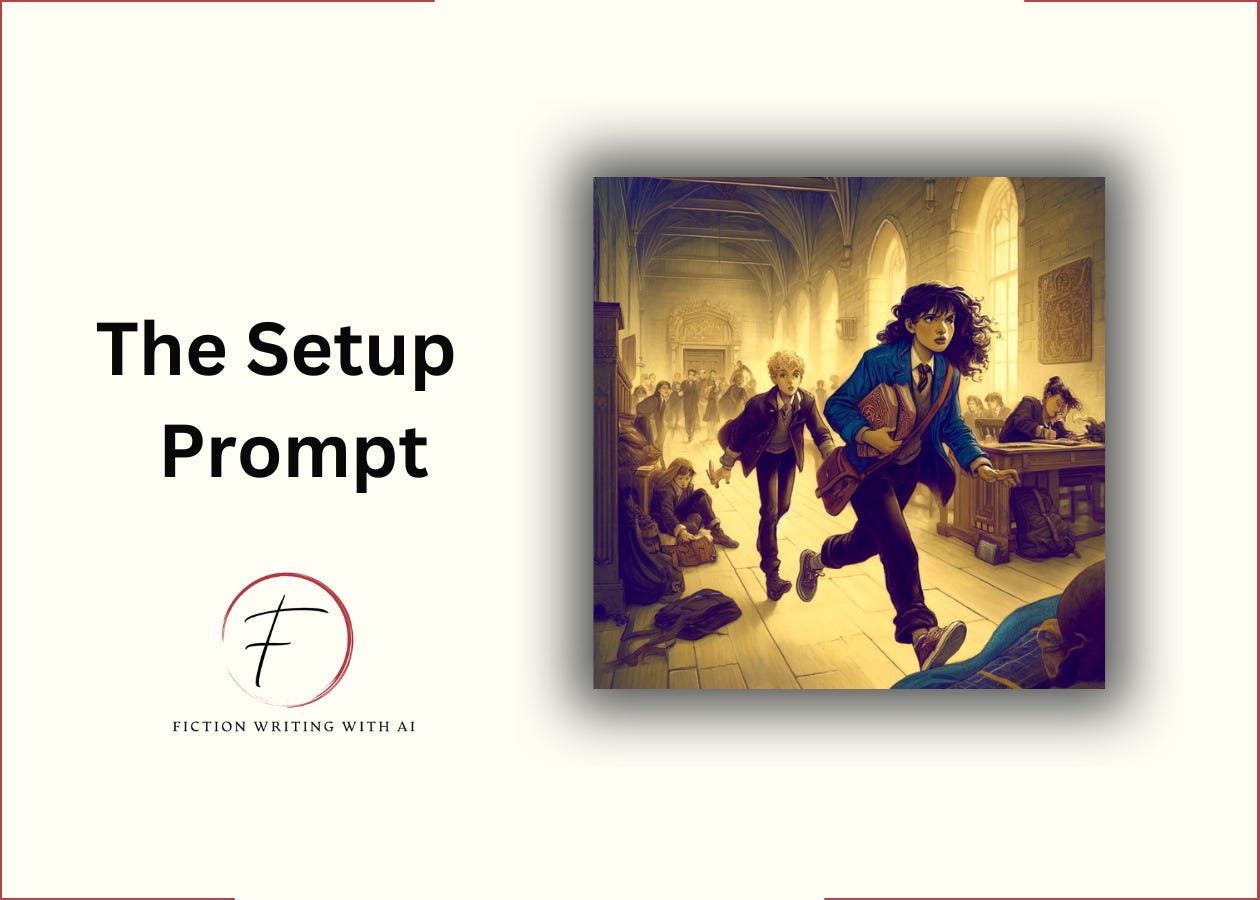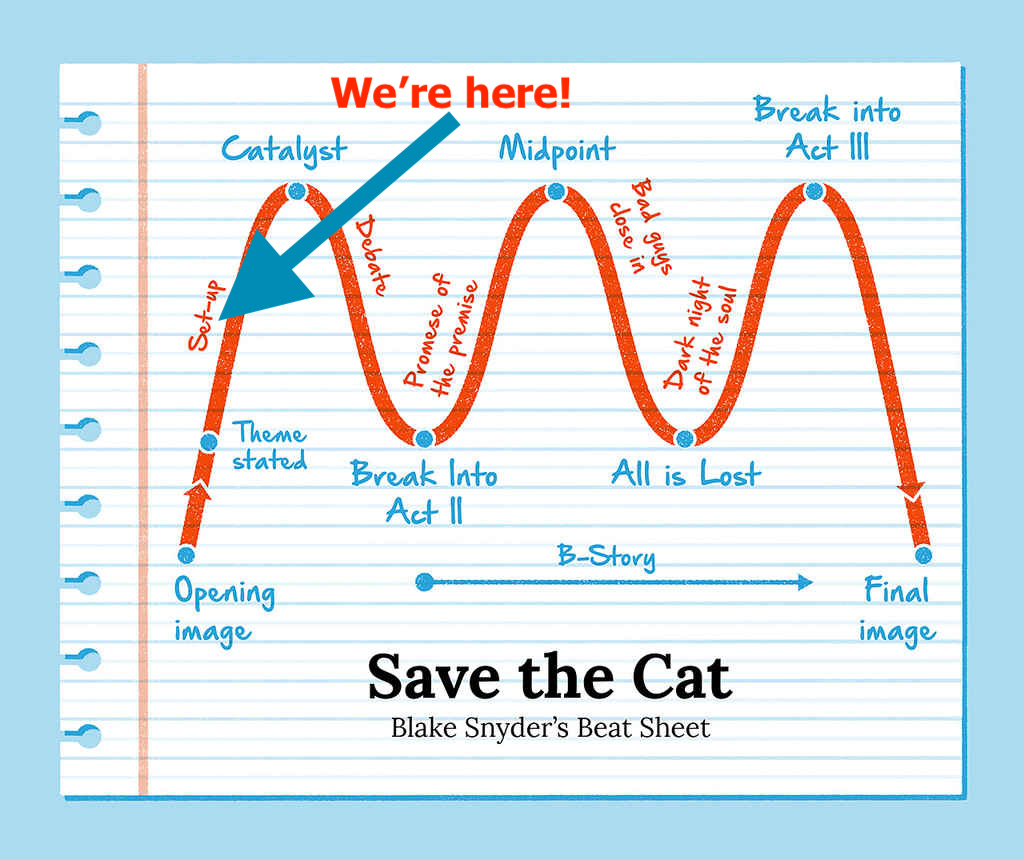Nail Your Story Setup With This Simple 3-Step Framework
Hey there, Fiction Writers!
"It's a setup."
No, I'm not talking about a prank or a trap. I'm talking about one of the most important (and often overlooked) parts of your novel: the Setup Scene.
The Setup lays the foundation for your story. It gives the reader a clear starting point, so they feel the impact of in your hero’s transformation.
But if you rush through it or skip it?
Your reader will feel like they've been "setup" for disappointment.
Because they won't understand what's at stake.
So in this post, I'm going to show you exactly how to write your Setup Scene using a simple 3-part framework (and a little help from AI).
By the end of this article, you'll know:
What the Setup Scene is and why it's important
The 3 key elements of a compelling Setup Scene
How to use AI to jumpstart your Setup Scene writing
Let’s dive in.
The Setup Scene
Following along with Blake Snyder’s 15 story beats, the Setup immediately follows the Opening and Theme Stated scenes (usually in the first 10% of your novel).
It accomplishes three key things:
Grounds the reader in the protagonist's "normal" world before the inciting incident shakes things up
Introduces essential supporting characters and relationships
Hints at the protagonist's deepest desires and the impending conflict
Without a strong Setup Scene, you’ll leave the reader feeling disconnected from the protagonist's journey. But when you nail it, you'll have readers invested and eager to see how the story unfolds.
So, how do you create a Setup Scene that works?
With this simple 3-part framework…
3-Steps To Set Your Story Up For Success
Let’s break it down.
Step 1: Show The Hero In Their Element
The first step is to paint a vivid picture of your protagonist's everyday life before the inciting incident kicks in.
What does a typical day look like for them?
Where do they live?
What's their job, hobbies, quirks?
The key is to make it feel relatable.
Like the reader is peeking through a window into the protagonist's world.
For example, in the opening of The Hunger Games, Suzanne Collins shows Katniss hunting in the woods, trading at the Hob, and caring for her family. In just a few pages, you get a clear sense of her skills, her relationships, and the reality of her daily life.
That's the power of a well-drawn "before" picture.
Step 2: Introduce The Key Players
The focus of this step is to bring in one or two important supporting characters.
You want to give your reader a sense of the relational dynamics.
Here's how you can do it:
Pick the most important person (or people) in your main character's life at the beginning of the story. This could be a the ally, a family member, love interest, mentor, or even your antagonist
Write a short scene or dialogue that shows your main character talking to or doing something with this other character.
Use the scene to drop clues about their relationship. Do they get along well? Are there any tensions or secrets between them? How might this character influence your protagonist's choices or feelings?
For example:
Let's say your main character is a 12-year-old boy named Charlie. In the Setup Scene, you could show Charlie playing video games with his older brother, Jack. Through their conversation, you hint that Charlie looks up to Jack but also feels overshadowed by him. This sets up potential conflicts for when the main story events happen.
The key is to give your readers a glimpse into the core relationships right from the start. That way, these characters will feel meaningful when they show up later in the story.
Step 3: Tease The Protagonist's Desires and Fears
Once you've established the protagonist's status quo, the next step is to give readers a glimpse of their innermost longings and fears.
What does your protagonist want most at this point in the story?
What's missing from their life?
What are they afraid of losing?
Go back to your Story Core and revisit the transformation you came up with when you first started planning your novel.
Find a way to naturally weave in a small moment or detail that alludes to this flaw. This could be through an action, a line of dialogue, an internal thought, or a brief flashback. Show your character gazing at a happy couple, or flinching at the sound of a slamming door.
The idea is to plant the seeds of their internal conflict.
Done well, this sets up a satisfying character arc that will leave readers rooting for the protagonist's growth and triumph.
This all sounds great, but what if I get stuck?
I've got two words for you: Artificial Intelligence.
Prompt AI To Write Your Setup Scene
If you're struggling to write your Setup Scene, then using this AI prompt will help.
It’s a quick way to inspire your writing..
The key is to give the AI a clear, specific prompt to work with. The more focused your input, the more useful the output will be
Let's look at an example…
Suppose you're writing a fantasy adventure novel. You might give the AI this prompt:
Keep reading with a 7-day free trial
Subscribe to Fiction Writing With AI to keep reading this post and get 7 days of free access to the full post archives.





